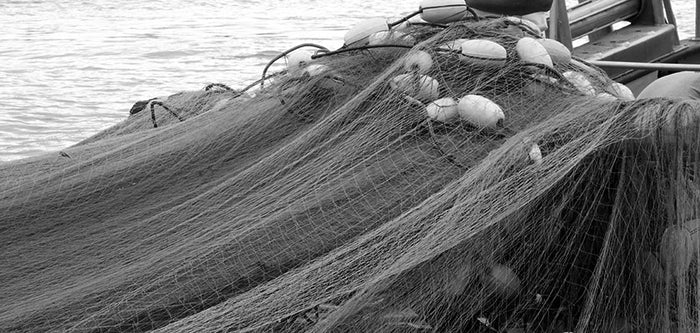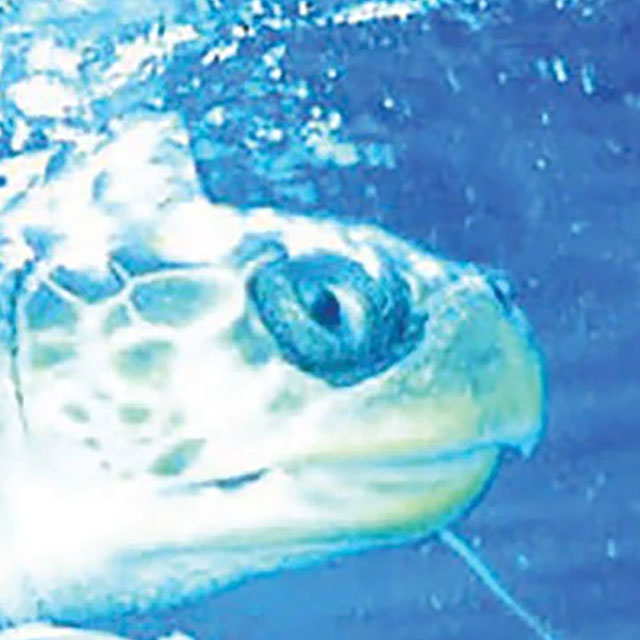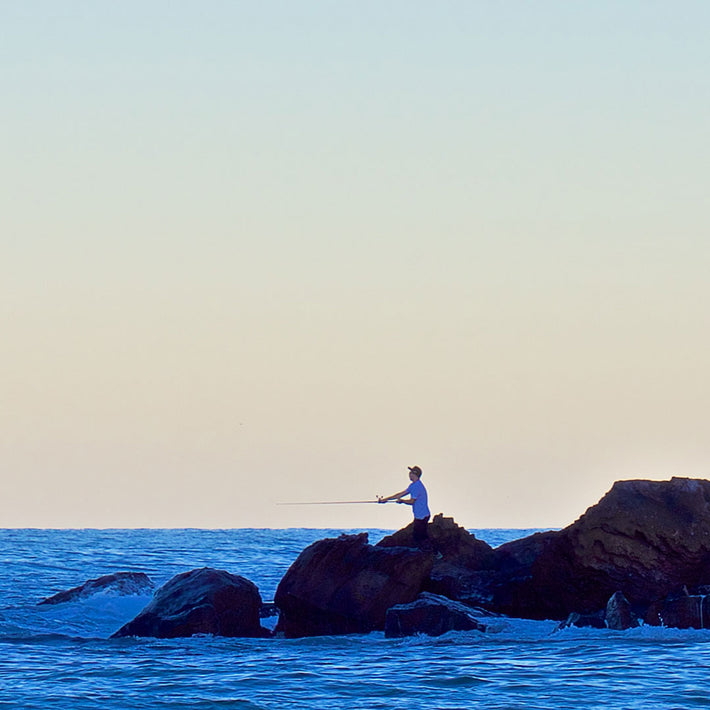

Removing the Gillnets
Nearshore Set Gillnets
For over 25 years, the Southern California sportfishing community watched the white seabass and halibut resource continue to decline, knowing the cause was gillnets. Nearshore "set" gillnets made of monofilament anchor to the bottom catching anything and everything while destroying habitats and fish populations. Sportfishing interests were unable to get the California Department of Fish and Game (CDFG) or the state legislature to take the problem seriously. In 1990, anglers took the gillnet issue to the people. Led by state assemblywoman Doris Allen, the required 600,000 signatures were gathered to put proposition 132 on the 1990 November ballot, and Californians passed this "gillnet initiative" that removed set gillnets from state waters in southern California. Not only did this effort bring about the recovery of halibut, white seabass, and other species, but it also helped set a precedent that led to subsequent net bans in Florida and other states.
From 2001 to 2005, UASC (with the help of AFTCO production manager, Dave Elm, then a board member and now chairman of UASC) — along with The Billfish Foundation (TBF), National Coalition for Marine Conservation (NCMC), and others — led a successful effort before the Pacific Fisheries Management Council to once again prevent the establishment of longlines on the West Coast. While AFTCO was not involved in as significant a way, our work long ago to remove and keep longlines out of California waters played a big role in the recent success. If AFTCO had not invested over 2,500 hours of time some 15 to 20 years ago and the longline industry had established itself in California waters, this most recent battle would have been much more difficult. Without AFTCO's early efforts, those of us in southern California possibly would now find ourselves in the same difficult situation facing the East Coast, Gulf Coast and in Hawaii, where they are still trying to remove the established longline fisheries.
Offshore Drift Gillnets
"Drift" gillnets, another type of gillnet used in the open ocean, cause their own indiscriminate destruction of marine fish, birds, turtles, and mammals alike. The problem with drift gillnets is that they have a very high bycatch rate. The estimate of finfish bycatch from 2004-2014 is up 64 percent. Bycatch includes marine mammals, turtles, and important sportfish such as striped marlin, bluefin tuna, and sharks, of which at least 20 percent are already dead upon release.
In the mid-1990's, a commercial fisherman contacted Milt Shedd to say that after many years of watching such destruction as a California drift gillnetter, he had developed a conscience. He now wanted the world to know what he knew about gillnets, and he had taken video during his last year of fishing in northern Mexican waters that showed by-kill of marlin, whales, turtles, sharks and more. He said that if he could remain anonymous and AFTCO would agree to not use the tape for at least a year, he would turn it over to AFTCO who could thereafter expose the footage to the world.
After a year had passed, Milt and Bill teamed up with others to arrange a press conference televised in Los Angeles, New York, and London. Millions of viewers saw the destruction on their local TV stations. In one instance, the gillnetter caught and threw back over 100 dead marlins in a single set. He moved 80 to 100 miles away in an effort to avoid the billfish, but with the next set inadvertently caught 50 more marlin, graphic proof of the lack of control the commercial fisherman has with destructive gear like gillnets.
Fast forward to 2019 when drift gillnets were still causing marine resource damage in California waters even though the Pacific Fisheries Management Council (PFMC) had spent over a decade trying to resolve the problems caused by the gear. The drift gillnet issue was finally forced into the hands of the California state legislature. Bill Shedd and AFTCO worked with others in the sportfishing and environmental communities to help educate legislators on why drift gillnets should not be used in California. They even suggested alternative fishing methods utilizing deep set buoy gear that would reduce the amount of bycatch and testified in congress fighting to ban these destructive gillnets. This collective effort by Shedd, AFTCO, and other sportfishing groups resulted in passing legislation to ban drift gillnets in California by 2023 by a combined vote in both state houses of 119 to 1.
Fishing Advocacy

Defeating the Long Lines
Learn More



